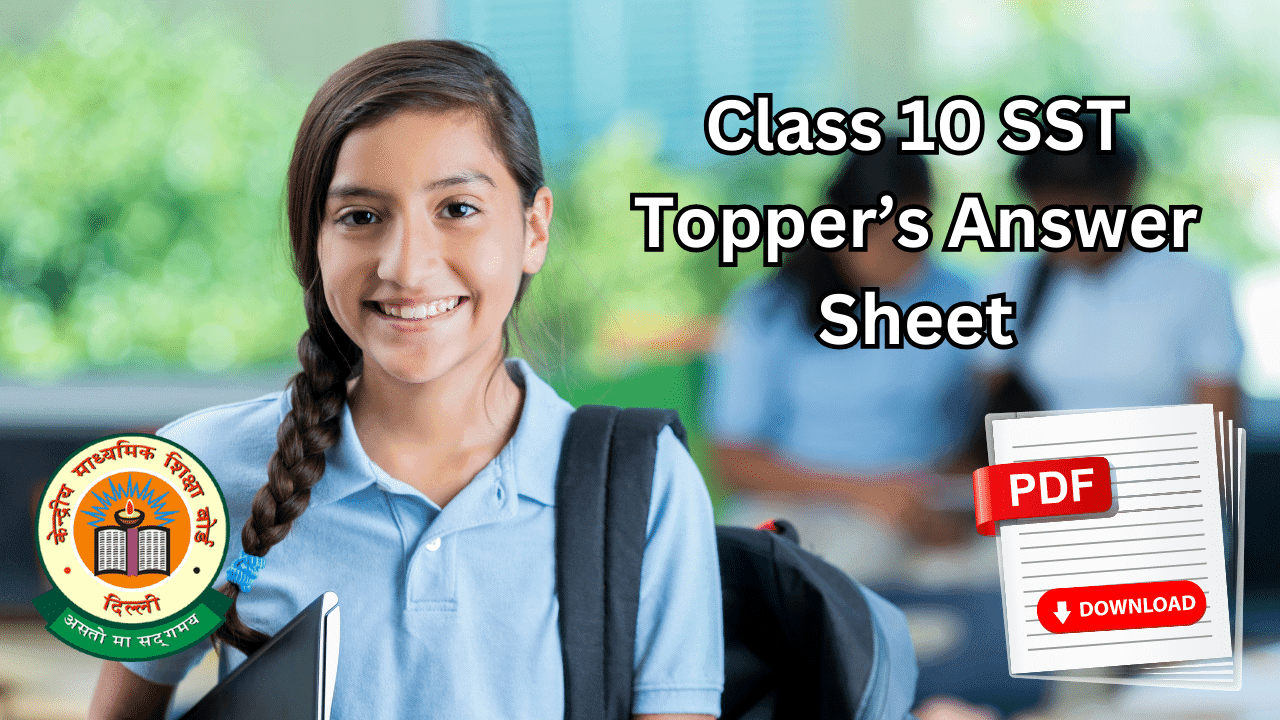Are you searching for the CBSE Class 10 Social Science (SST) 2024 Topper’s Answer Sheet? In this blog post, we provide the official question paper and topper’s answers, helping you understand the best way to write answers in the CBSE board exam. If you want to score full marks in Social Science, analyzing topper’s answers is a must!
Why Refer to the CBSE Class 10 SST Topper’s Answer Sheet?
- ✅ Learn the Best Answer Writing Techniques – Understand how toppers frame their answers to maximize marks.
- ✅ Identify Important Keywords – Use NCERT-based terminology to make your answers precise.
- ✅ Master Map Work – See how toppers correctly label maps and diagrams.
- ✅ Follow the Ideal Word Limit – Know how much to write for different types of questions.
- ✅ Improve Presentation Skills – Learn how to structure your answers neatly with headings and bullet points.
How to Write Answers Like a Topper?
If you want to score 95+ marks in SST, follow these strategies inspired by topper’s answer sheets:
1️⃣ Stick to NCERT Content
CBSE strictly follows NCERT. Ensure your answers are NCERT-based and avoid unnecessary details.
2️⃣ Use Bullet Points for Theoretical Answers
Instead of lengthy paragraphs, use bullet points for better readability and presentation.
3️⃣ Practice Map Work Regularly
For Geography questions, ensure you can label maps neatly and correctly.
4️⃣ Support Your Answers with Data
Use facts, years, and statistics from the NCERT textbook to make your answers more impactful.
5️⃣ Follow Proper Formatting
- Start with a clear introduction
- Use headings and subheadings
- End with a strong conclusion, if required
CBSE Class 10 SST 2024 Topper’s Answer Sheet: Question Paper and Answers
General Instructions:
Read the following instructions carefully and follow them:
(i) This question paper contains 37 questions. All questions are compulsory.
(ii) The question paper is divided into six sections – Section A, B, C, D, E, and F.
(iii) Section A – Questions no. 1 to 20 are Multiple Choice type questions. Each question carries 1 mark.
(iv) Section B – Questions no. 21 to 24 are Very Short Answer type questions. Each question carries 2 marks. Answer to these questions should not exceed 40 words.
(v) Section C – Questions no. 25 to 29 are Short Answer type questions. Each question carries 3 marks. Answer to these questions should not exceed 60 words.
(vi) Section D – Questions no. 30 to 33 are Long Answer (LA) type questions. Each question carries 5 marks. Answer to these questions should not exceed 120 words.
(vii) Section E – Questions no. 34 to 36 are Case-based / Source-based questions with three sub-questions. Each question carries 4 marks.
(viii) Section F – Question no. 37 is Map skill-based question with two parts – 37(a) from History (2 marks) and 37(b) from Geography (3 marks). This question carries a total of 5 marks.
(ix) In addition to this, NOTE that a separate question has been provided for Visually Impaired candidates in lieu of questions having visual inputs, map, etc. Such questions are to be attempted by Visually Impaired candidates only.
SECTION A
(Multiple Choice Questions) (20×1=20)
1. Who among the following hosted the ‘Vienna Congress’ in 1815?
(A) Chancellor Duke Metternich
(B) Ernst Renan
(C) William I
(D) Otto von Bismarck
2. Which one of the following religions emerged from eastern India and spread in several directions through intersecting points on the ‘silk routes’?
(A) Hinduism
(B) Christianity
(C) Buddhism
(D) Jainism
3. Arrange the following events in chronological order and choose the correct option.
I. Formation of Khilafat Committee in Bombay
II. Jallianwala Bagh Massacre
III. Bardoli Satyagraha
IV. Withdrawal of Non-Cooperation Movement
Options:
(A) I, II, III, IV
(B) II, I, IV, III
(C) I, II, IV, III
(D) III, IV, II, I
4. Choose the correct option to fill in the blank.
In the beginning of the 19th century, _____ a girl married in a very orthodox household wrote an autobiography called ‘Amar Jiban’.
(A) Pandita Ramabai
(B) Rashsundari Devi
(C) Tarabai Shinde
(D) Kailashbashini Debi
5. Match Column I with Column II and choose the correct option.
| Column I (National Park) | Column II (State) |
| i. Kaziranga | a. Madhya Pradesh |
| ii. Jim Corbett | b. Assam |
| iii. Sunderbans | c. Uttarakhand |
| iv. Bandhaygarh | d. West Bengal |
Options:
(A) i-a, ii-b, iii-c, iv-d
(B) i-d, ii-c, iii-b, iv-a
(C) i-c, ii-b, iii-d, iv-a
(D) i-b, ii-c, iii-d, iv-a
6. In which one of the following states is ‘bamboo drip irrigation system’ prevalent?
(A) Tamil Nadu
(B) West Bengal
(C) Meghalaya
(D) Odisha
7. Which one of the following is the highest ‘bauxite’ producing state of India?
(A) Maharashtra
(B) Jharkhand
(C) Gujarat
(D) Odisha
8. Two statements, I and II are given below. Read both the statements and choose the correct option.
Statement I: Division of power is good for democratic systems.
Statement II: It helps to reduce the possibility of conflict between social groups.
Options:
(A) Statement I is true, but II is false.
(B) Statement I is false, but II is true.
(C) Statements I and II are true and II is the correct explanation of I.
(D) Statements I and II are true, but II is not the correct explanation of I.
9. Choose the most appropriate option regarding the division of legislative rights in India.
(A) Union List – Defence and Commerce
(B) State List – Police and Agriculture
(C) Concurrent List – Forest and Communication
(D) Residuary Subjects – Computer Software and Trade
10. Read the following provisions regarding Secularism in the Indian Constitution and choose the correct option.
I. The Indian State has not adopted any religion as its official religion.
II. The Constitution gives freedom to all the citizens to practice and propagate any religion.
III. The Constitution declares any kind of discrimination done on the basis of religion to be legal.
IV. It gives the government the right to intervene in religious matters for ensuring equality within religious communities.
Options:
(A) Only I, II and III are correct.
(B) Only I, II and IV are correct.
(C) Only I, III and IV are correct.
(D) Only II, III and IV are correct.
11. Which one of the following steps has been taken by the Election Commission of India to reform political parties?
(A) Amended the Constitution to prevent defection.
(B) Candidates will have to give the details of criminal cases on affidavit.
(C) Candidates will have to give details of their property on affidavit.
(D) It has been made mandatory for all parties to conduct organizational elections and file income tax returns.
12. Two statements are given below. They are Assertion (A) and Reason (R). Read both the statements and choose the correct option.
Assertion (A): Multi-party system has been adopted in India.
Reason (R): It is capable of accommodating all the social and geographical differences in India.
Options:
(A) Both (A) and (R) are true and (R) is the correct explanation of (A).
(B) Both (A) and (R) are true, but (R) is not the correct explanation of (A).
(C) (A) is true, but (R) is false.
(D) (A) is false, but (R) is true.
13. Which one of the following is a scheduled language as per the Constitution of India?
(A) Bhojpuri
(B) Garhwali
(C) Nepali
(D) Rajasthani
14. Two statements, I and II are given below. Read both the statements and choose the correct option.
Statement I: Women are now actively contributing to various professions including roles as doctors, engineers, lawyers, managers, and university teachers.
Statement II: Political expression of gender division and political mobilization helped to improve women’s role in public life.
Options:
(A) Statement I is true, but II is false.
(B) Statement I is false, but II is true.
(C) Statements I and II are true and II is the correct explanation of I.
(D) Statements I and II are true, but II is not the correct explanation of I.
15. In one of the small villages, a farmer borrows money from the village moneylender at a high monthly interest rate but is not able to repay it back. Next, he borrows it from a bank at a lower interest rate. Gradually he earns and pays back the loan to the moneylender and the bank.
Which of the following best describes the role of the bank in this credit situation?
(A) The bank acts as a cooperative lender.
(B) The bank facilitates a debt-trap situation.
(C) The bank ensures a fair exchange of goods.
(D) The bank saves the farmer from debt-trap.
16. Look at the given picture. The work being done in the picture comes under which one of the following economic sectors?

(A) Primary
(B) Secondary
(C) Tertiary
(D) Quaternary
17. Two statements are given below. They are Assertion (A) and Reason (R). Read both the statements and choose the correct option.
Assertion (A): Rural poor families are still dependent on informal sources of credit.
Reason (R): For obtaining a loan from banks, collateral and special documents are required.
Options:
(A) Both (A) and (R) are true and (R) is the correct explanation of (A).
(B) Both (A) and (R) are true, but (R) is not the correct explanation of (A).
(C) (A) is true, but (R) is false.
(D) (A) is false, but (R) is true.
18. Which one of the following is included in ‘liberalization’?
(A) Promoting trade barriers
(B) Removing trade barriers
(C) Controlling the other country through trade
(D) Increasing import, export duty on goods
19. Which one of the following sectors has the highest share in employment in India?
(A) Primary
(B) Secondary
(C) Tertiary
(D) Quaternary
20. Select the formal sources of credit from the given sources and choose the correct option.
I. Bank
II. Moneylender
III. Cooperatives
IV. Businessman
Options:
(A) Only I and II
(B) Only II and III
(C) Only I and III
(D) Only I and IV
Ans.
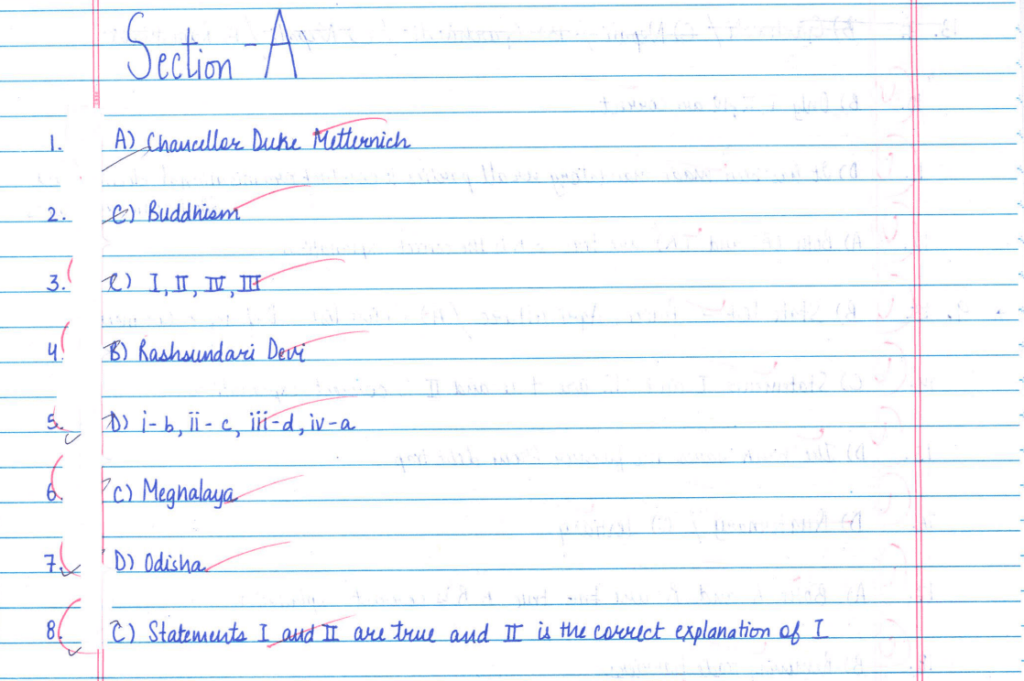
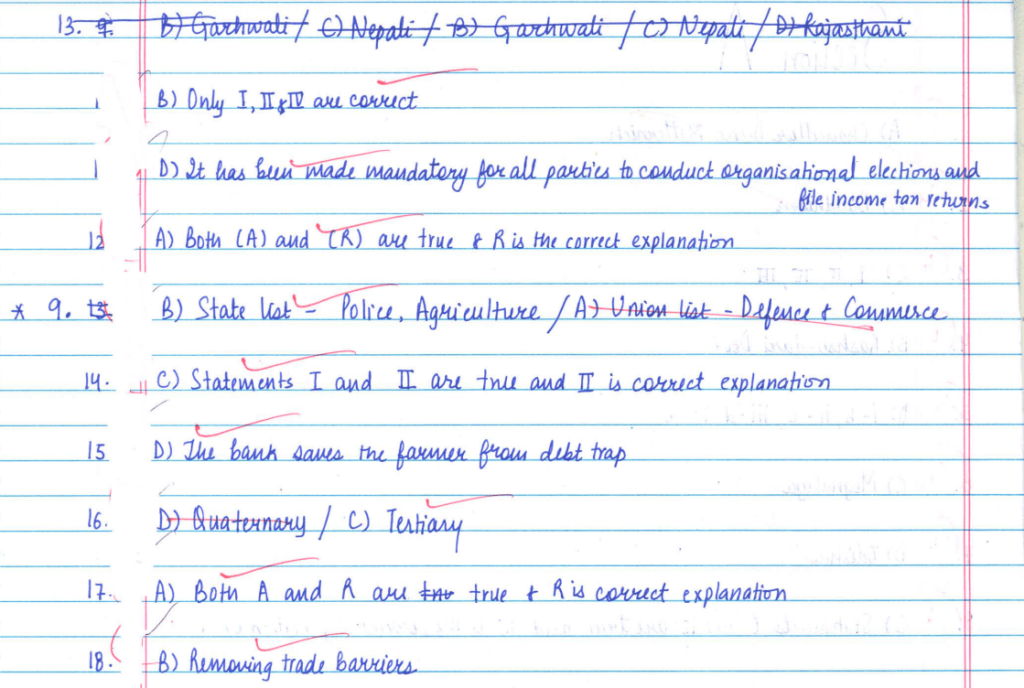

SECTION B
(Very Short Answer Type Questions) (4×2=8)
21. Why was the Indian subcontinent central to the flows of the trading network before the sixteenth century? Explain.
22. (a) “Minerals occur in igneous and metamorphic rocks.” Explain the statement with an example.
OR
(b) “The ocean waters contain vast quantities of minerals.” Explain the statement with an example.
23. Why was the need for decentralization recognized in the Indian Constitution? Explain.
24. How have the developments in information and communication technology been the major factor to enable globalization? Explain.
Ans.
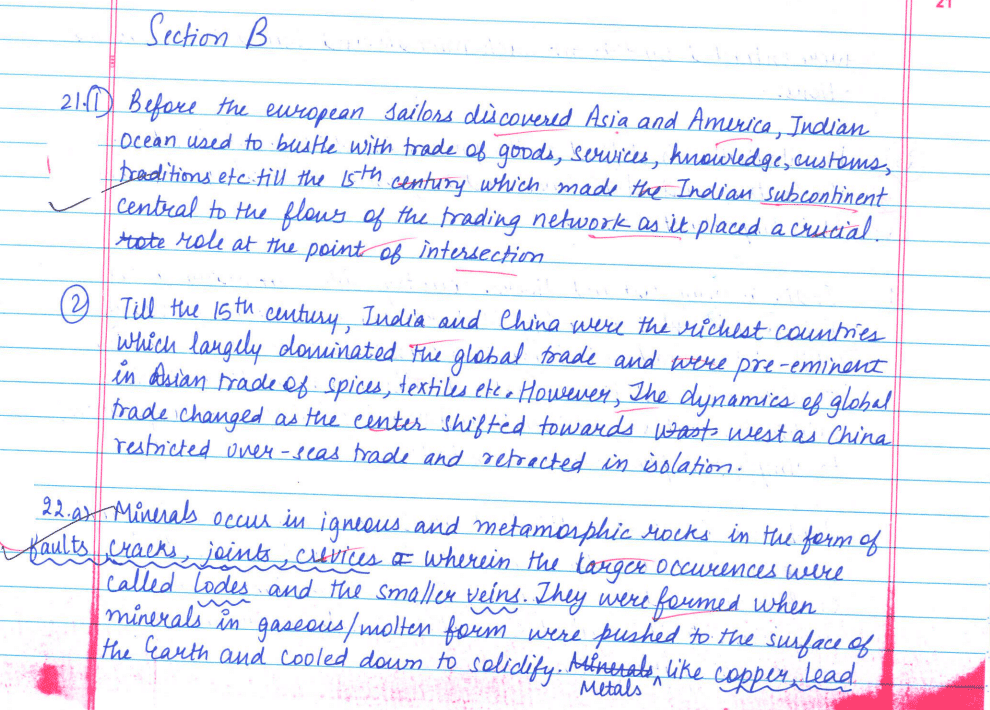
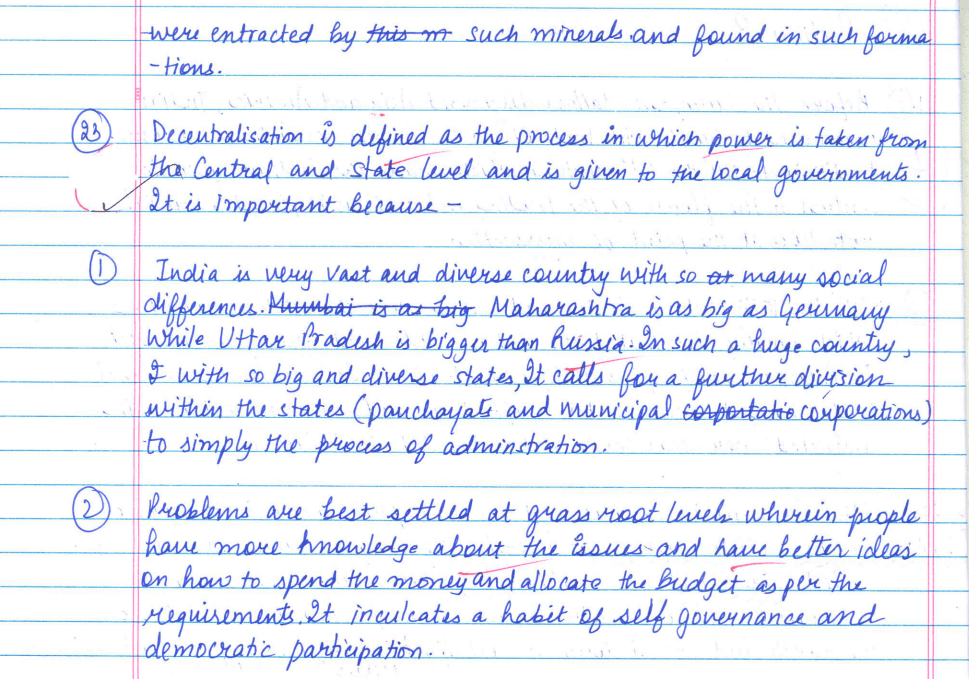
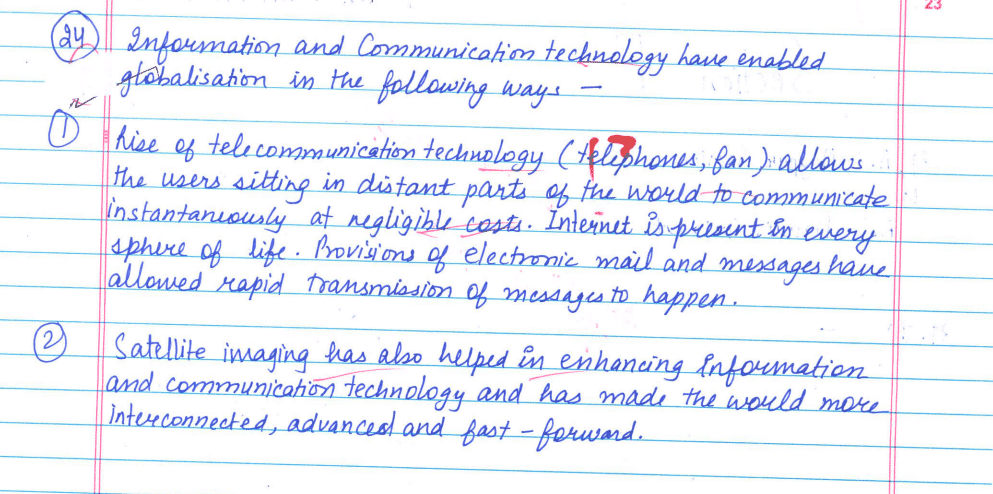
SECTION C
(Short Answer Type Questions) (5×3=15)
25. (a) Explain the role of women in the Civil Disobedience Movement, with examples.
OR
(b) How did the Indian folklore and symbols strengthen the idea of nationalism during the twentieth century? Explain with examples.
26. Describe any three impacts of globalization on Indian agriculture.
27. Analyze any three challenges faced by political parties in India.
28. Describe any three characteristics of the Indian federal system.
29. Why has the issue of sustainability become essential for development in present times? Explain with an example.
Ans.
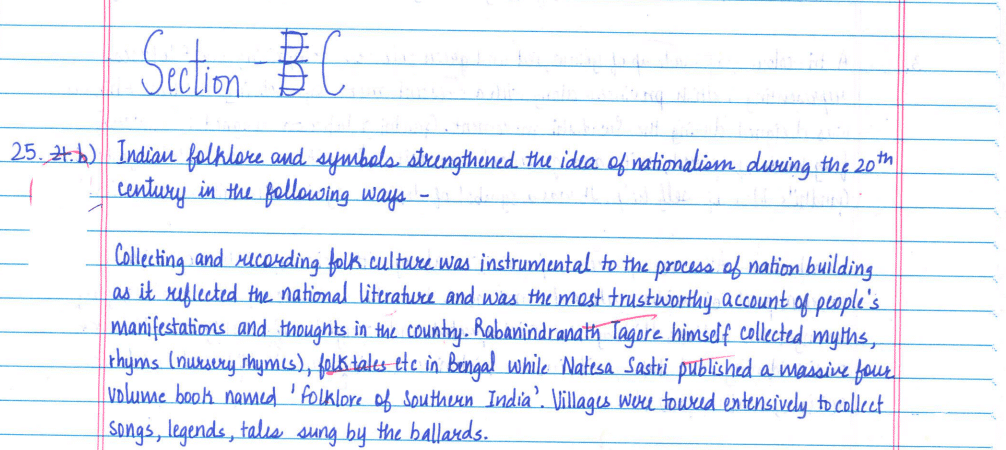
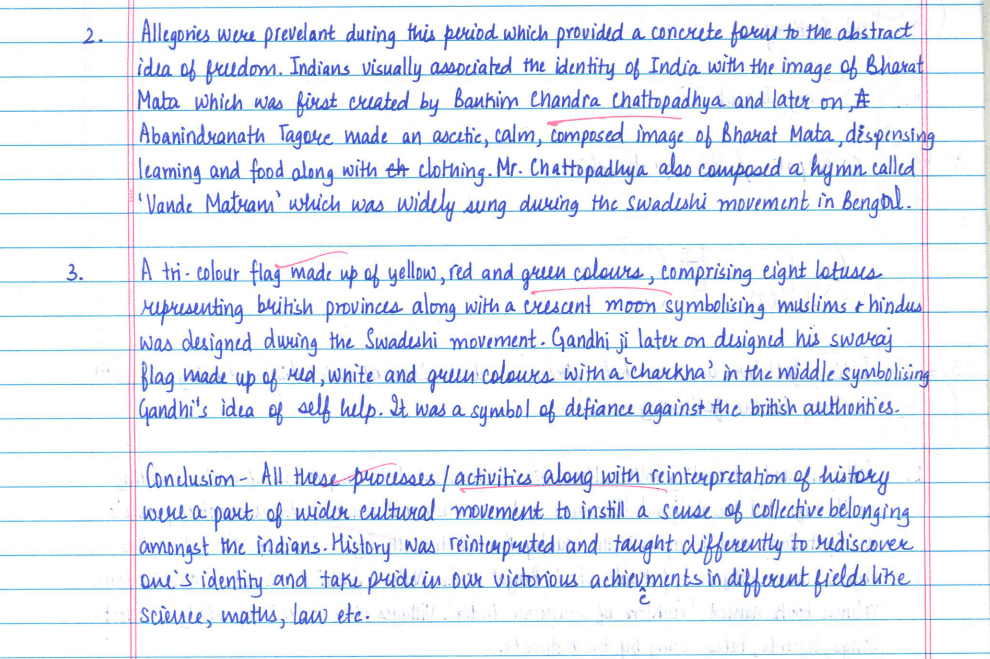
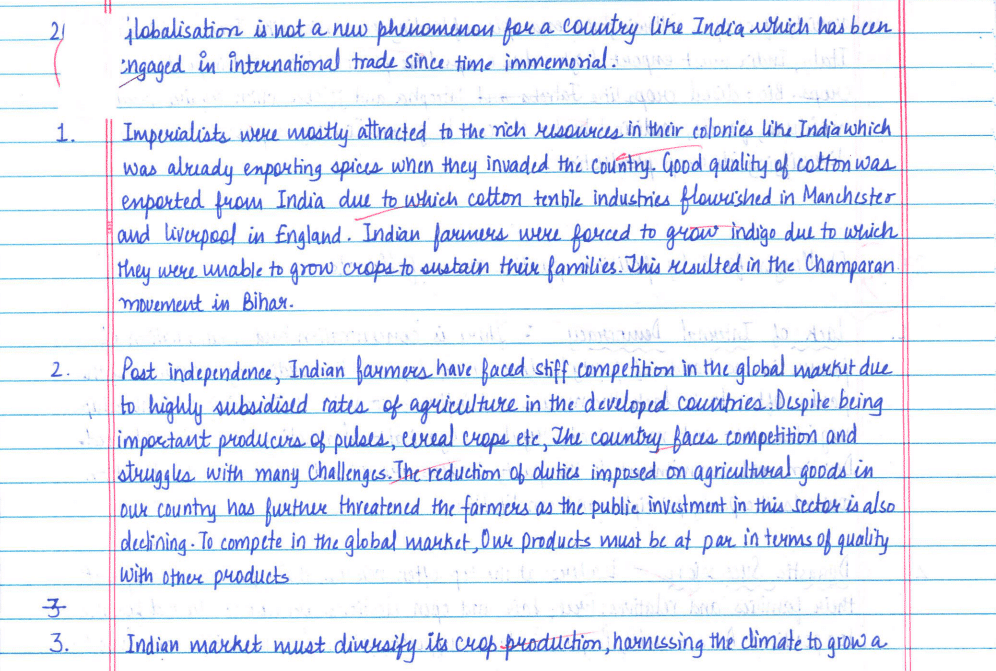
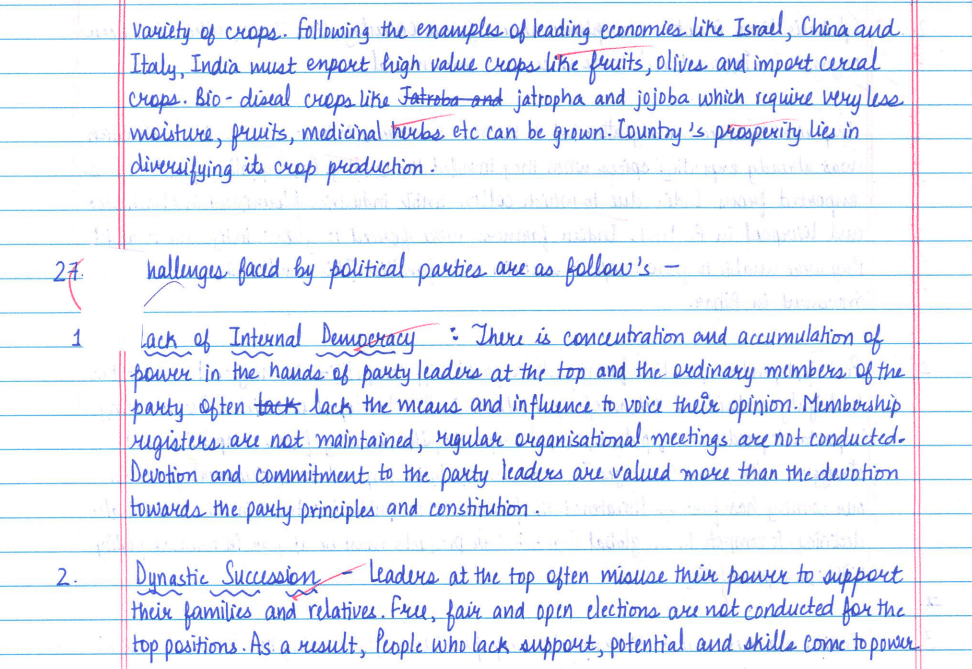
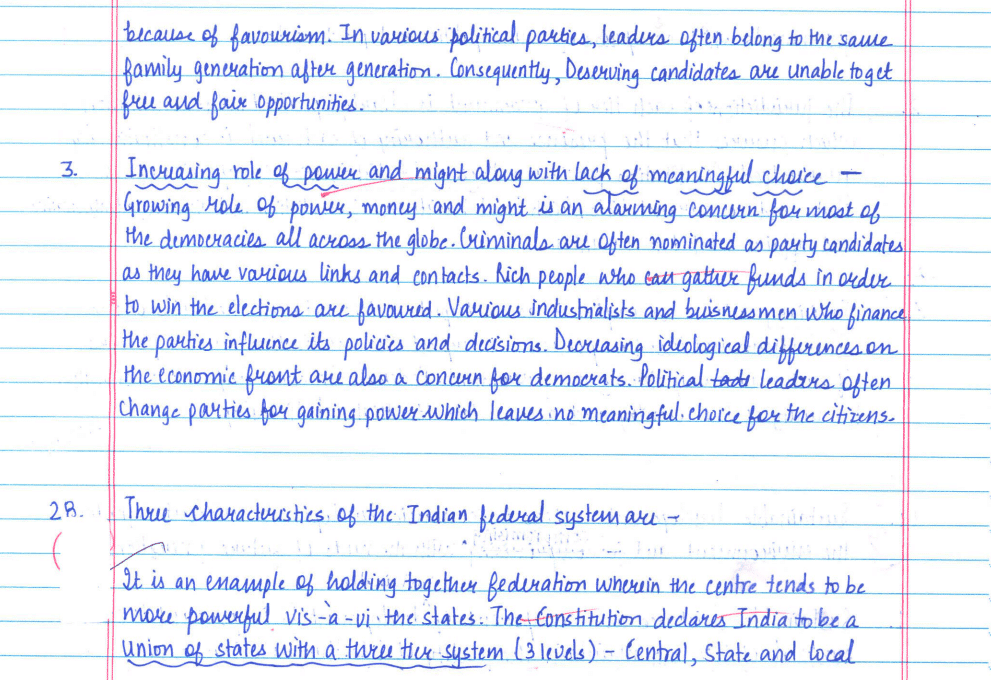
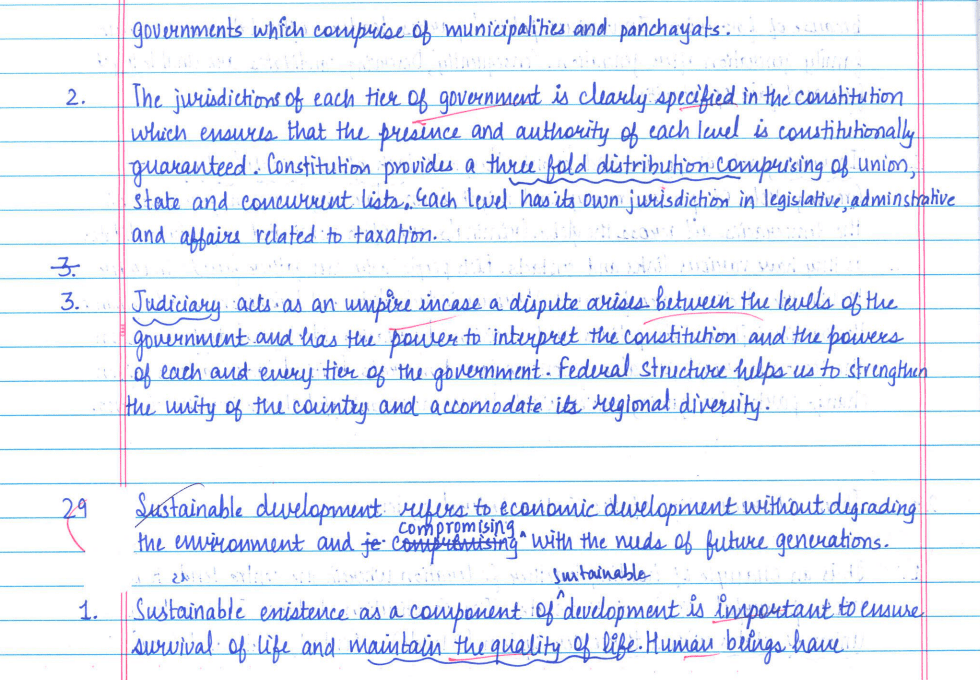
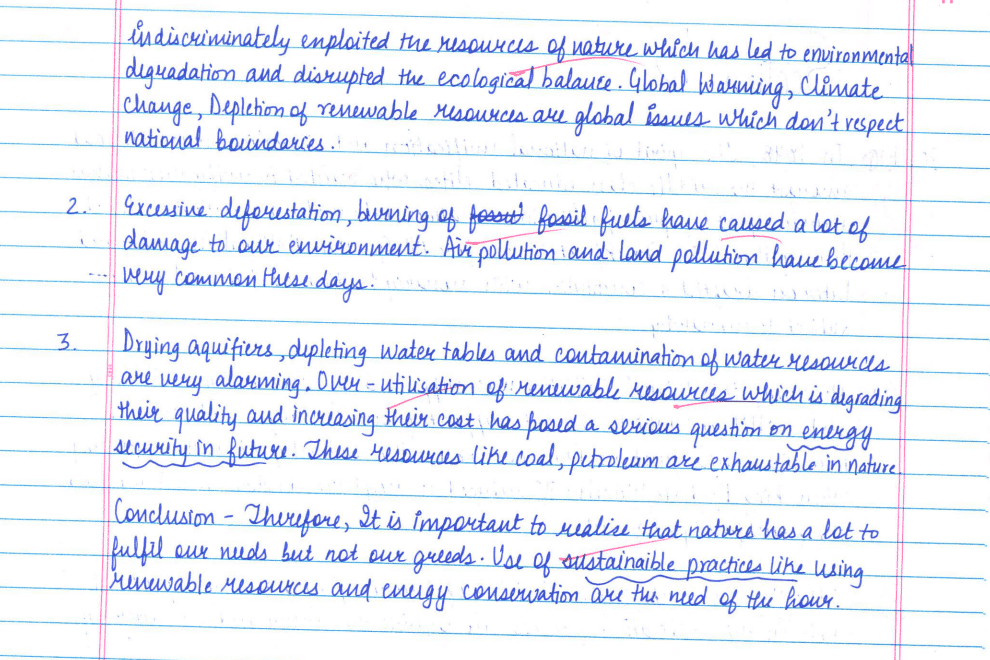
SECTION D
(Long Answer Type Questions) (4×5=20)
30. (a) Evaluate the role of Giuseppe Mazzini in the unification of the Italian Republic.
OR
(b) Evaluate the role of Otto von Bismarck in the unification of Germany.
31. (a) “Manufacturing sector is considered the backbone of development of the country.” Justify the statement.
OR
(b) “Agriculture and Industry move hand in hand.” Justify the statement.
32. (a) Explain with examples the role of democracy in the reduction of inequality and poverty.
OR
(b) How is democracy a legitimate government? Explain with examples.
33. (a) Explain the differences between public and private sectors of economic activities.
OR
(b) Explain the differences between the organized and unorganized sectors of economic activities.
Ans.
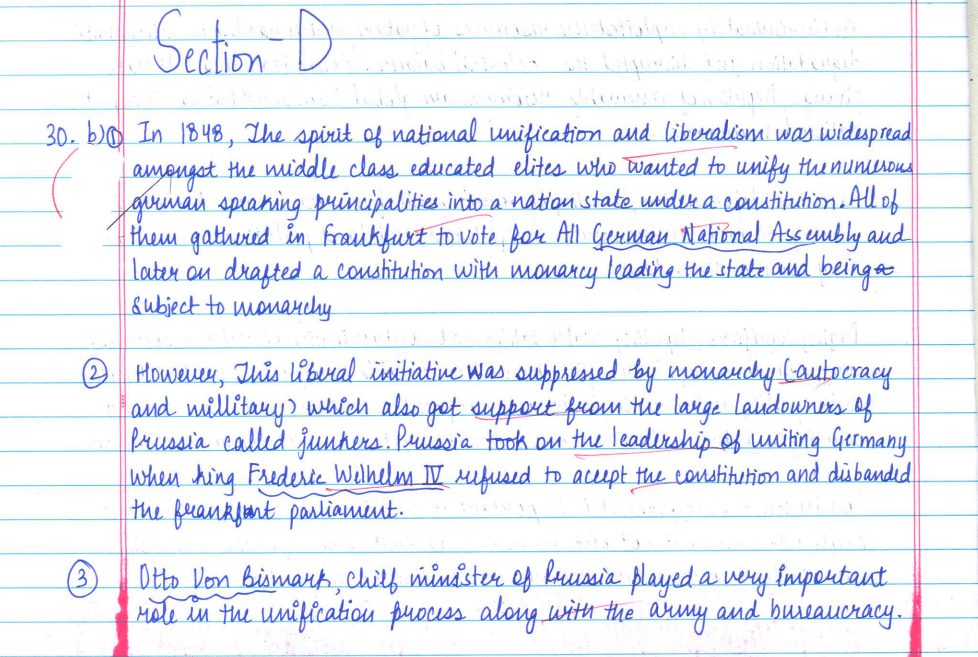
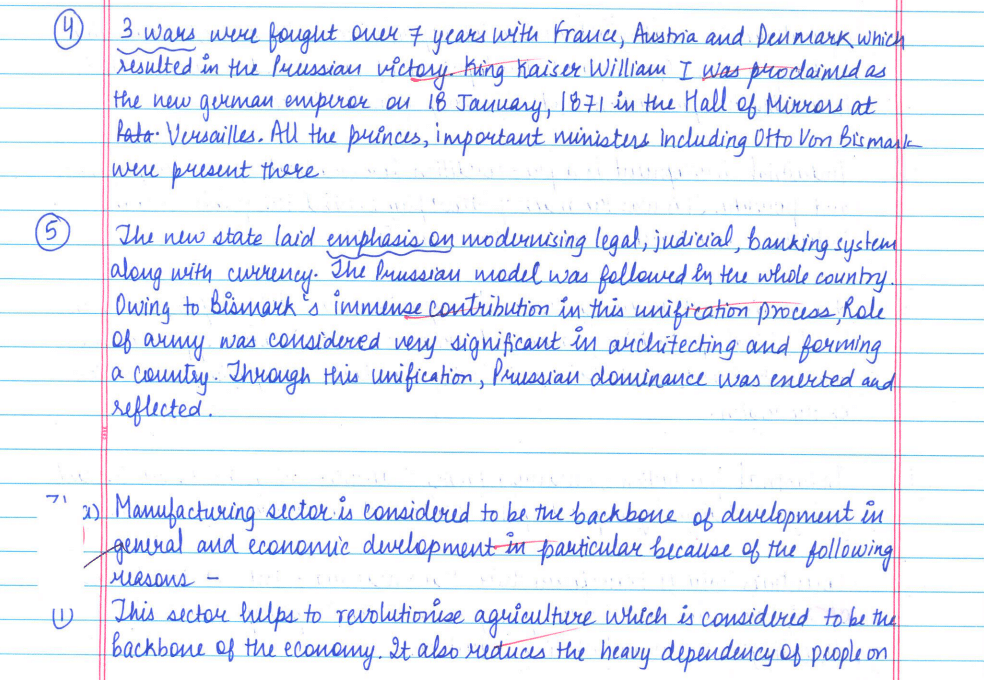
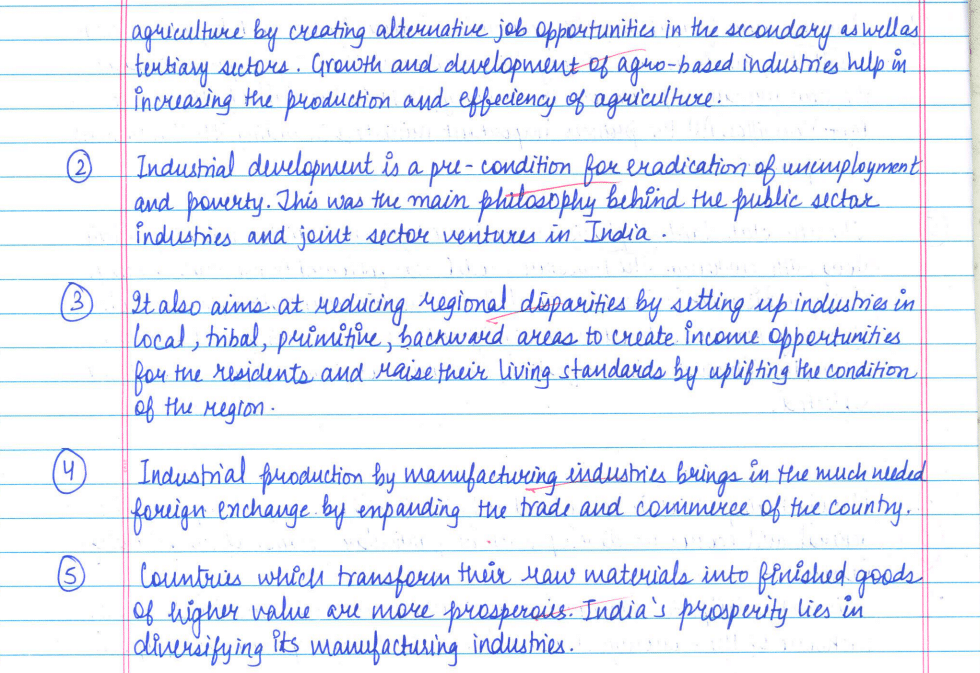
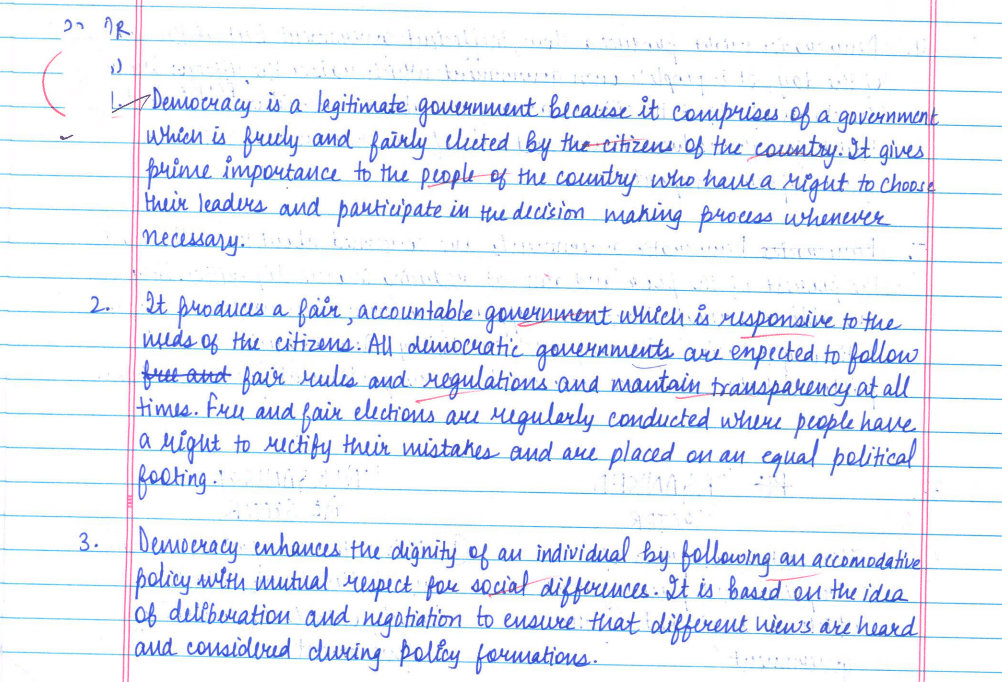
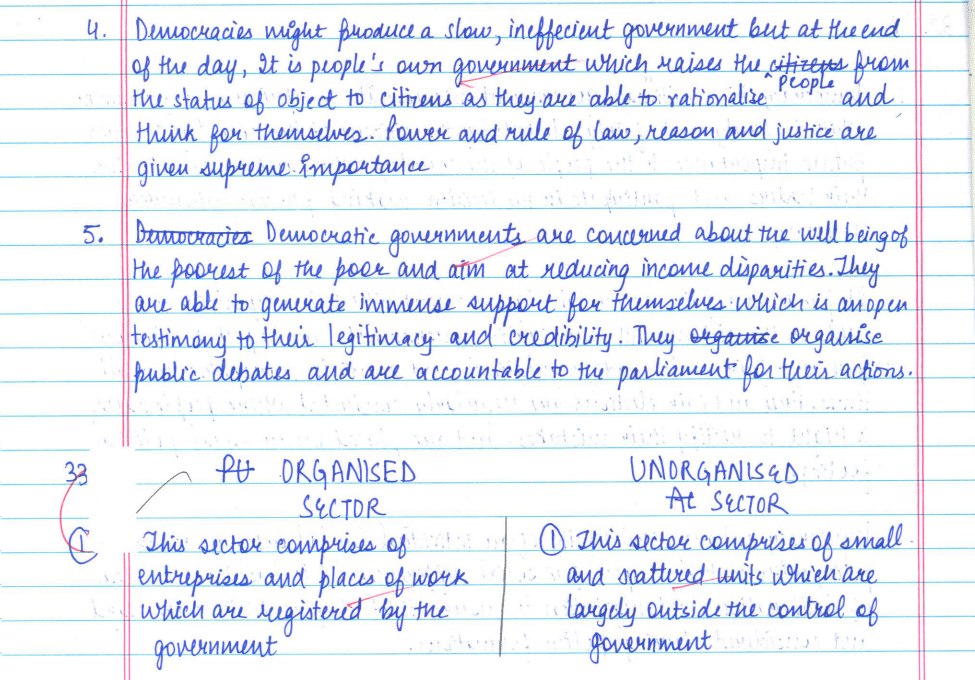
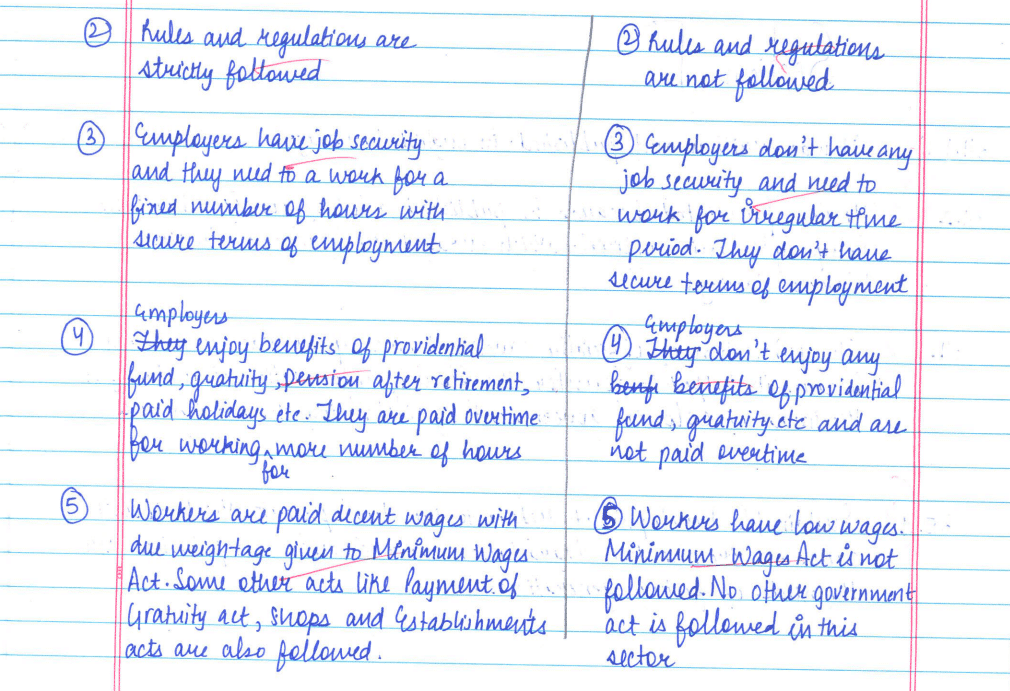
SECTION E
(Case-Based/Source-Based Questions) (3×4=12)
34. Read the given source and answer the questions that follow:
Print Comes to India
From 1780, James Augustus Hickey began to edit the Bengal Gazette, a weekly magazine that described itself as ‘a commercial paper open to all, but influenced by none’. So it was private English enterprise, proud of its independence from colonial influence, that began English printing in India. Hickey published a lot of advertisements, including those that related to the import and sale of slaves. But he also published a lot of gossip about the Company’s senior officials in India. Enraged by this, Governor-General Warren Hastings persecuted Hickey, and encouraged the publication of officially sanctioned newspapers that could counter the flow of information that damaged the image of the colonial government. By the close of the eighteenth century, a number of newspapers and journals appeared in print. There were Indians, too, who began to publish Indian newspapers. The first to appear was the weekly Bengal Gazette, brought out by Gangadhar Bhattacharya, who was close to Raja Rammohan Roy.
(34.1) In which language was ‘Bengal Gazette’ edited by James Augustus Hickey published?
(34.2) Why was James Augustus Hickey persecuted?
(34.3) Which newspapers were encouraged during the 1780s? Why were they encouraged?
Ans.
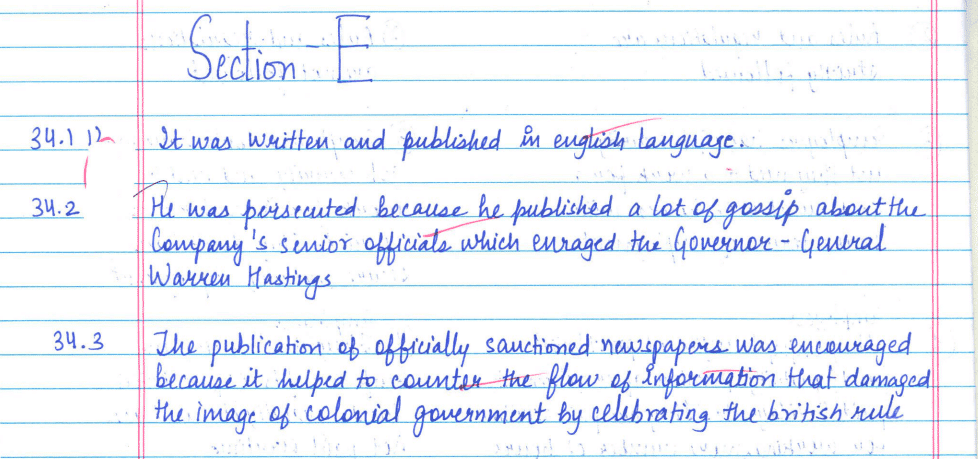
35. Read the given source and answer the questions that follow:
Conservation of Resources
At the international level, the Club of Rome advocated resource conservation for the first time in a more systematic way in 1968. Subsequently, in 1974, Gandhian philosophy was once again presented by Schumacher in his book Small is Beautiful. The seminal contribution with respect to resource conservation at the global level was made by the Brundtland Commission Report, 1987. This report introduced the concept of ‘Sustainable Development’ and advocated it as a means for resource conservation, which was subsequently published in a book entitled Our Common Future. Another significant contribution was made at the Earth Summit at Rio de Janeiro, Brazil in 1992.
(35.1) Explain the meaning of sustainable development.
(35.2) In which international conference was ‘Agenda-21’ accepted?
(35.3) Explain any two outcomes of the Summit.
Ans.

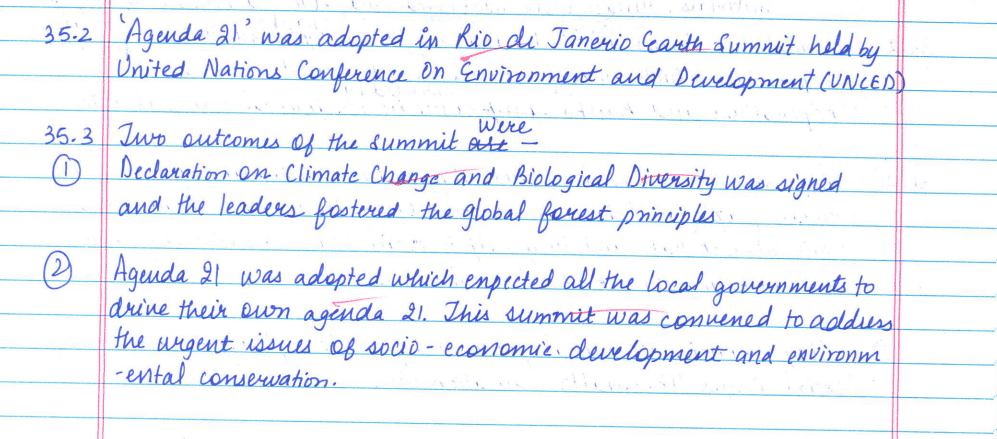
36. Read the given source and answer the questions that follow:
Loans from Cooperatives
Besides banks, the other major source of cheap credit in rural areas are the cooperative societies (or cooperatives). Members of a cooperative pool their resources for cooperation in certain areas. There are several types of cooperatives possible such as farmers cooperatives, weavers cooperatives, industrial workers cooperatives, etc. Krishak Cooperative functions in a village not very far away from Sonpur. It has 2300 farmers as members. It accepts deposits from its members. With these deposits as collateral, the Cooperative has obtained a large loan from the bank. These funds are used to provide loans to members. Once these loans are repaid, another round of lending can take place.
Krishak Cooperative provides loans for the purchase of agricultural implements, loans for cultivation and agricultural trade, fishery loans, loans for construction of houses and for a variety of other expenses.
(36.1) How do ‘Krishak Cooperatives’ secure funds for providing loans to their members?
(36.2) What are the different types of loans that ‘Krishak Cooperatives’ offer to their members?
(36.3) Why are such cooperatives desirable in the rural areas?
Ans.

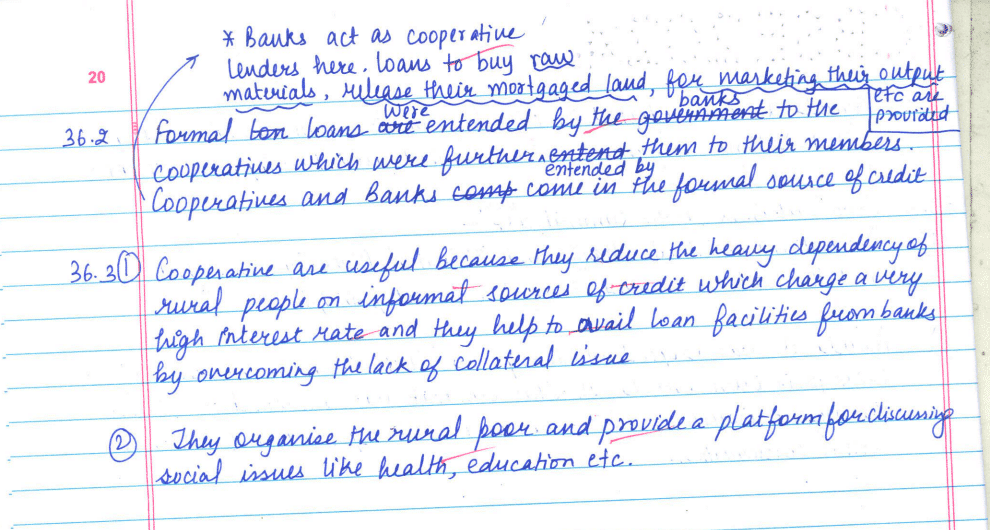
SECTION F
(Map Skill-Based Question) (2+3=5)
37. (a) Two places ‘A’ and ‘B’ have been marked on the given political outline map of India (on page 27). Identify them with the help of the following information and write their correct names on the lines drawn near them:
A. The place where the session of Indian National Congress was held in 1920.
B. The place where Gandhiji broke the salt law.
(b) On the same political outline map of India, locate and label any three of the following with suitable symbols:
(i) Bailadila – Iron ore Mines
(ii) Namrup – Thermal Power Plant
(iii) Kandla – Major Sea Port
(iv) Meenam Bakkam – International Airport
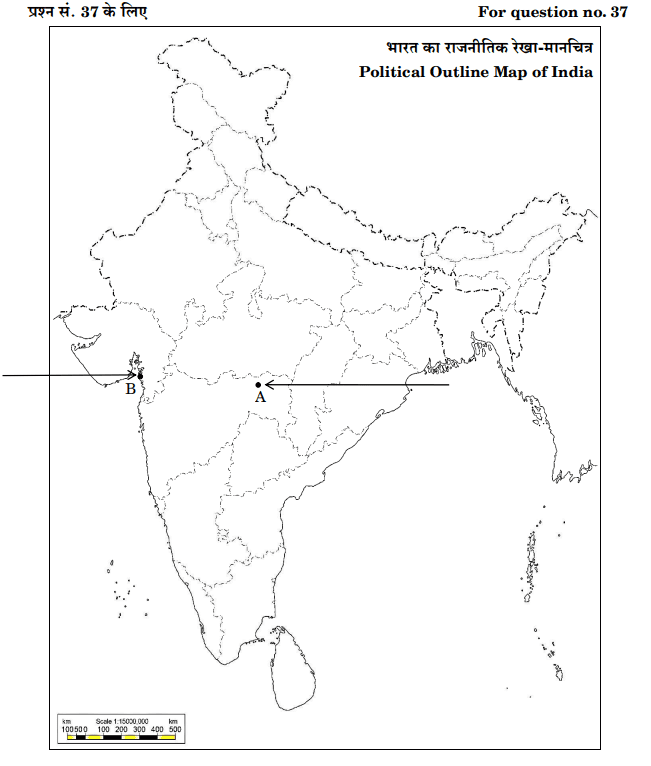
Ans.

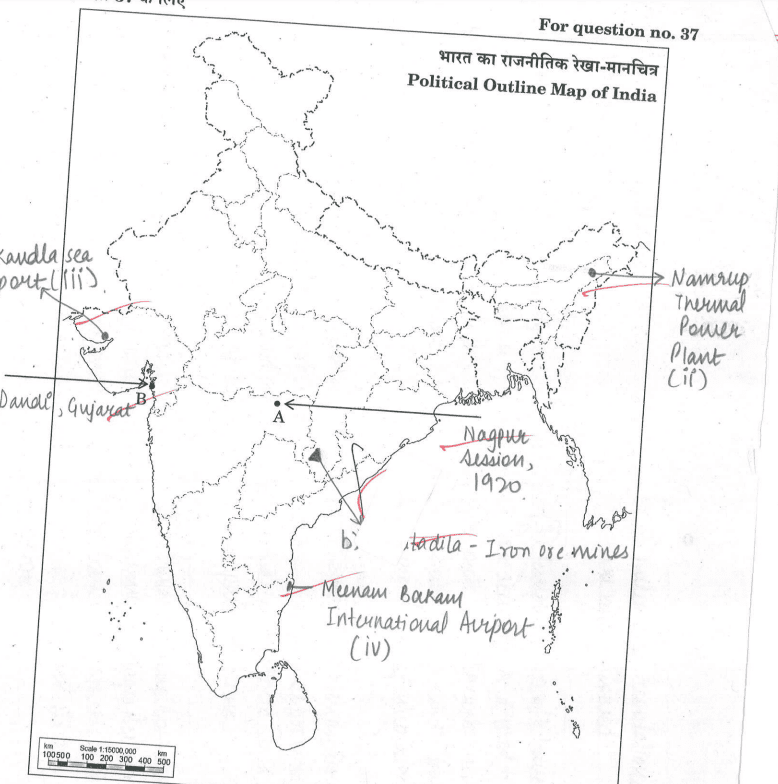
Most Important Topics for CBSE Class 10 SST 2024 Board Exam
Based on past trends, here are some highly important topics:
🔹 Nationalism in India (History) 🔹 Resources and Development (Geography) 🔹 Power Sharing & Federalism (Political Science) 🔹 Money and Credit (Economics) 🔹 Sectors of the Indian Economy (Economics) 🔹 Globalization and the Indian Economy (Economics) 🔹 Democracy and Diversity (Political Science)
CBSE Class 10 Social Science 2024 Question Paper (Download PDF)
We have provided the official CBSE Class 10 Social Science 2024 question paper in PDF format. Click the link below to download:
🔗 Download CBSE Class 10 Social Science 2024 Question Paper
CBSE Class 10 Social Science 2024 Topper’s Answer Sheet (PDF)
To help students achieve high scores, we have uploaded the CBSE Class 10 SST Topper’s Answer Sheet in PDF format. This answer sheet includes well-structured responses, key points, and proper formatting that secured the highest marks.
🔗 Download CBSE Class 10 Social Science 2024 Topper’s Answer Sheet
Conclusion
Referring to the CBSE Class 10 Social Science 2024 Topper’s Answer Sheet can significantly improve your preparation. Download the PDFs provided and start practicing answer writing based on the topper’s techniques.
Stay Updated: Bookmark this page and subscribe to our website for the latest CBSE updates, sample papers, and study materials.
Share this post with your classmates who are preparing for the CBSE Class 10 board exams!
For more study resources, visit CBSE Guidance
